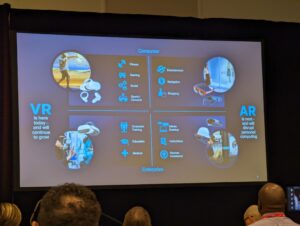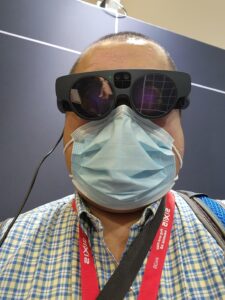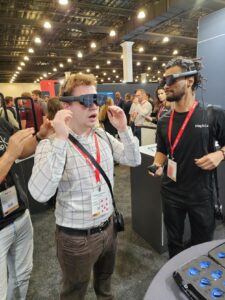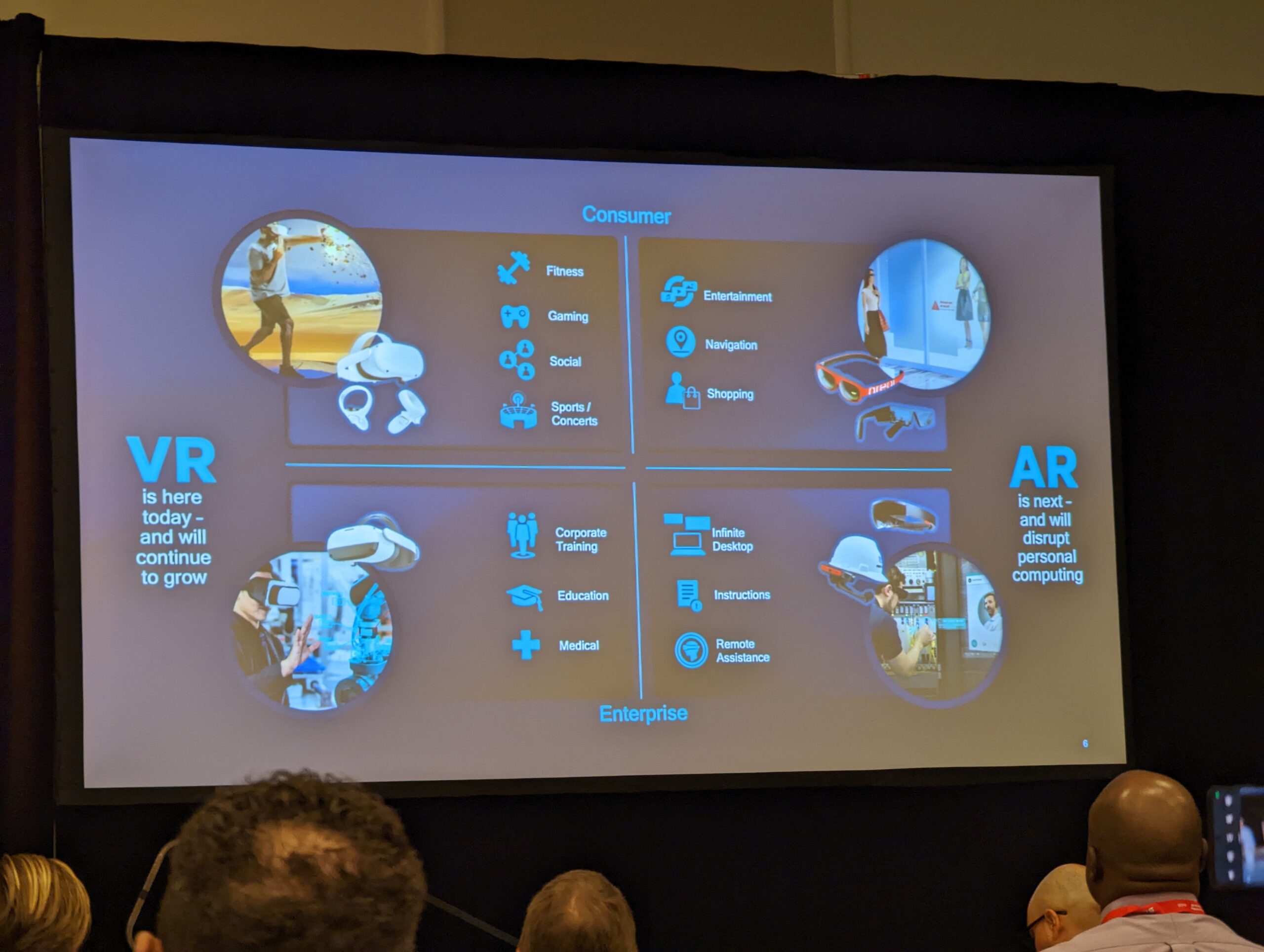The Event
The Augmented Enterprise Summit (AES) provides an in-depth look into industries that are in the early stages of deploying extended reality (XR) at scale. Similar to other conferences, the venue was split between an exhibit hall and educational talks. While the exhibit hall represented companies working on the technical facets of XR, the educational sessions were focused on companies implementing XR in the workforce. This juxtaposition underscores the current fragmentation in the XR industry. With a small set of headset manufacturers and a plethora of potential use cases, a synergy between these two forces appears lacking. Headset manufacturers remain in the early stages of delivering a full feature suite on their products, and industry adopters have not unified on a standout use case that warrants co-development or optimization with a headset manufacturer.

Enterprise XR Use cases
The leading use cases highlighted at AES for XR are immersive training & collaboration and remote technical assistance. These implementations of XR are saving organizations money by removing physical limitations of interaction, collaboration, and troubleshooting.
Attendance
Early adopters of XR and attendees of AES primarily represent manufacturing and building information modeling (BIM) backgrounds, who find value in visualizing complex data in a 3D environment.
Healthcare
Healthcare representation was notably absent over the three-day conference was direct. While healthcare may not be ready to deploy XR at scale, inspiration can be drawn from the industries using XR today. Training and data visualization have use cases for healthcare, but the cost savings may not be as easily actualized.
Training has the clearest potential for cost savings, enabling a reduction of material costs and geography-independent training sessions. However, the tactile feedback of training with real equipment remains the barrier to smooth adoption.
Data visualization, specifically for MRIs and surgery planning can upgrade a clinician’s ability to understand medical imaging, however, headset resolution and undefined cost savings remain two major barriers.
Concerns
Barriers to XR do not just exist in healthcare. On a broad scale, practitioners of XR spoke about several key concerns that permeate the XR headset industry. Primarily due to the emerging nature of XR, headset durability and repairability are two major factors to consider when managing a fleet of headsets. Furthermore, the user experience and onboarding process remain disparate and overly complex for some users.



